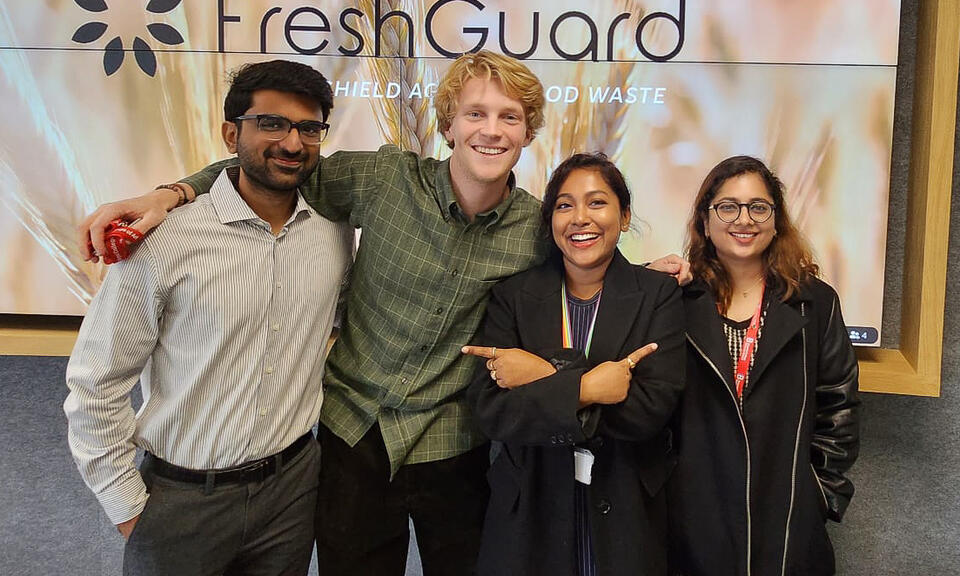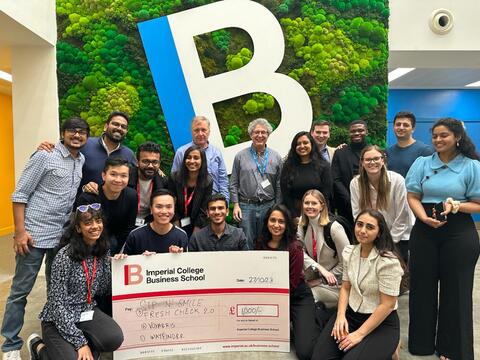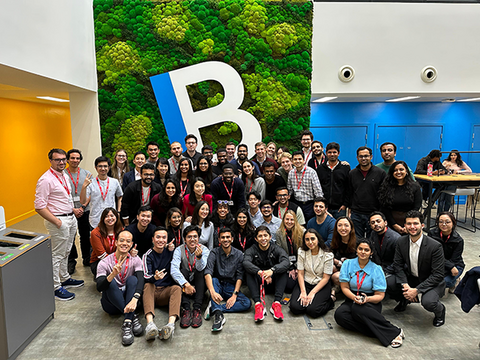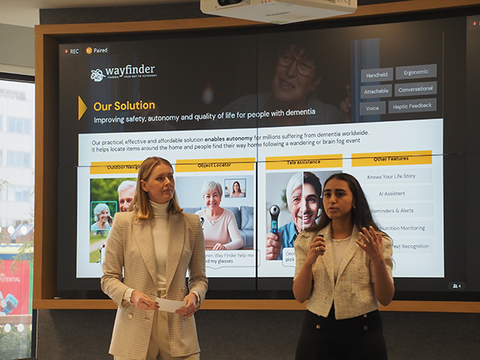
Published
Blog type
In October, our Full-Time MBA students from Imperial College Business School navigated the Imperial Innovation Challenge. This one-week learning laboratory, provided students with the opportunity to work with Imperial College London scientists to apply innovative thinking to generate business solutions to complex international issues. This activity brings together Full-Time MBA students from Imperial College Business School and design students from the Royal College of Art. In groups, they used business model innovation to create economic disruption with positive environmental and social effects. Full-Time MBA student Aakanksha Jaiswal shares her highlights of the week.
Aakanksha Jaiswal
Nationality: Indian
Education: BSc Economics and Industrial Organisation, MSc Economics
The purpose of this week
The purpose of this week is to learn how deep tech acceleration works, how it is different to the lean methodology and why it is more conducive for out-of-the-box thinking and innovation. We work closely with early-stage technology developers or start-ups that are at technology readiness level (TRL) 3 or 4 to understand the technology and brainstorm further potential applications. To make things more fun and competitive, teams pitch their final business ideas in a Dragon’s Den style competition to VC representatives for prizes at the end of the week.
Our team project
We worked with a start-up called Pulpatronics, which has developed a metal-free sustainable radio frequency identification chip. It was very exciting to work with an early-stage start-up and learn all that goes into conceiving an idea, testing it and then taking it to market. It was even more thrilling because the idea had been conceived during a group project that the founders had undertaken together while at Imperial! You never know what might come out your time while at the College. In fact, the start-up got their patent filing confirmation while on call with us explaining how their technology works. Many congratulations and a big shout-out to Chloe, Soma and Rui for all their support in doing this project.

Leveraging cutting-edge technology
Our project was based on Laser Induced Graphene, a cutting-edge technology that creates graphene out of polyamide materials by subjecting it to high intensity laser. This is a very early-stage technology but with tremendous potential. We identified an application in biosensing which could be used to reduce food waste by embedding LIG sensors in food packaging.
The biggest challenge
The biggest challenge we encountered was finding an application that was innovative while being feasible. We also needed to understand the principles of the science behind the technology to make recommendations that were realistic and create a roadmap to test our assumptions. This was particularly challenging as all of us were from non-science backgrounds.
Overcoming obstacles
We used the “de-risking” methodology to identify and define experiments that could test the assumptions we were making about the technology and the market. We also worked closely with our mentors from Pulpatronics to leverage their research and understanding to sanity-check our ideas. Further, we undertook secondary research into the different applications we had identified to understand the technology readiness level for those specific applications.
My highlight of the week
The highlight of the week was the pitching competition at the end. While it felt intimidating at the beginning, we supported each other as a group and made a great presentation. Each group came up with a unique product and tried to sell it to the judges in innovative ways. One of the groups showcasing a heat-sensing technology even had a member pretend to faint due to heat so that he could be rescued by their product. This was so convincing that I almost called an ambulance!
As a group, we were surprised by the variety and number of innovative ideas we came up with. What was even more surprising was how many different applications already existed or had ongoing research! Some of the most interesting applications we found were tracking casino chips or currency, tattooing livestock using dielectric ink and smart trial rooms in fashion retail, all using the same basic technology.

Mentorship and support we received
We worked closely with Christopher Tucci who is Professor of Digital Strategy and Innovation and Professor Erkko Autio who is Chair in Technology Venturing and Entrepreneurship at Imperial College Business School. They guided and mentored us from Day 1, encouraging us to think out of the box. We also got feedback from our peers and gave feedback to our peer groups too, facilitating the active exchange of ideas. We worked with the Deep Tech Acceleration Canvas throughout the week and had workshops on intellectual property, technology de-risking and more. We also visited Hack Space, a prototyping lab open to Imperial students to develop their ideas into functional prototypes, complete with 3D printers and a wet-lab.
My learnings from this week
There were three major learnings that emerged from innovation week.
-
First, anyone can innovate and be an entrepreneur with the right toolkit! My last role was a Senior Consultant at Deloitte.
-
Second, as business students, we shouldn’t restrict ourselves to the realm of “feasibility” alone – the next big idea might be around the corner with a little more experimentation.
-
Third, it is important to identify at each stage which ideas are worth pursuing and which need to be shelved. As Professor Tucci says, we shouldn’t throw “good money” after “bad money”!

